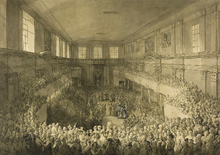Full transcript of President Biden's speech in Warsaw on Russia's invasion of Ukraine
VIDEO > https://www.youtube.com/watch?v=O729ZiRwK50
#ABCNews #PresidentJoeBiden #Warsaw Biden delivers remarks on Ukraine crisis from Warsaw | ABC News 31,473 views Mar 26, 2022 :: By ABC News March 26, 2022, 4:51 PM
"Kierkegaard" "Faith sees best in the dark"
- https://www.patheos.com/blogs/unsystematictheology/2015/09/faith-sees-best-in-the-dark-joe-biden-and-kierkegaard/
- https://qz.com/501014/philosophers-explain-the-meaning-of-the-kierkegaard-quote-that-comforts-joe-biden/
- https://plato.stanford.edu/entries/kierkegaard/
- https://en.wikipedia.org/wiki/S%C3%B8ren_Kierkegaard
- Pope John Paul II
- [ Poland : https://en.wikipedia.org/wiki/Poland >
SOURCE: https://en.wikipedia.org/wiki/Poland#History >
"...
History : Main article: History of Poland ( Prehistory and protohistory )
https://en.wikipedia.org/wiki/Molotov%E2%80%93Ribbentrop_Pact < MOLOTOV
 |
 |
 |
 |
 |
||||
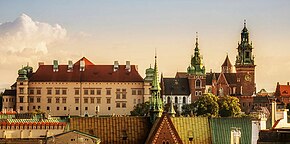 |
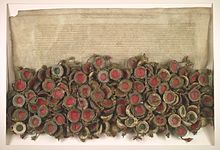 |
 hh hh |
 |
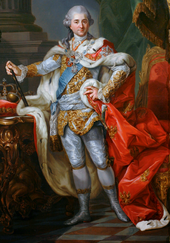 |
||||
|
h |
 |
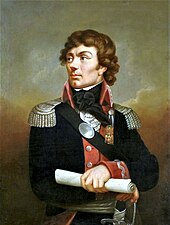 |
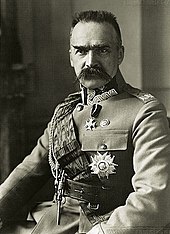 |
 |
||||
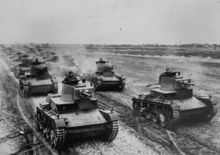 |
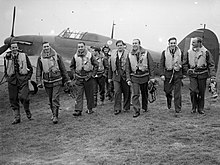 |
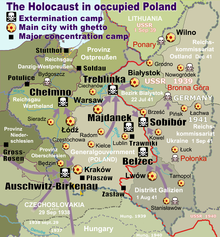 |
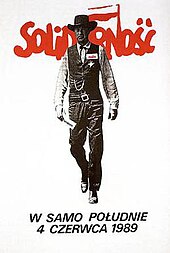 |
 |
Main articles: Bronze- and Iron-Age Poland, Poland in Antiquity, Early Slavs, West Slavs, Lechites, and Poland in the Early Middle Ages
A reconstruction of a Bronze Age, Lusatian culture settlement in Biskupin, 8th century BC
The first Stone Age archaic humans and Homo erectus species settled what was to become Poland approximately 500,000 years ago, though the ensuing hostile climate prevented early humans from founding more permanent encampments.[34] There is evidence that sporadic groups of hunter-gatherer Neanderthals penetrated southern Polish regions during the Eemian interglacial period (128,000–115,000 BCE) and in the subsequent millennia.[35] The arrival of Homo sapiens and anatomically modern humans coincided with the climatic discontinuity at the end of the Last Glacial Period (10,000 BC), when Poland became habitable.[36] Neolithic excavations indicated broad-ranging development in that era; the earliest evidence of European cheesemaking (5500 BC) was discovered in Polish Kuyavia,[37] and the Bronocice pot is incised with the earliest known depiction of what may be a wheeled vehicle (3400 BC).[38]
The period spanning the Bronze Age and the Early Iron Age (1300 BC–500 BC) was marked by an increase in population density, establishment of palisaded hamlets (gords) and the expansion of Lusatian culture, which held strong ties to Nordic and Hallstatt material culture.[39][40] A significant archaeological find from the protohistory of Poland is a fortified settlement at Biskupin, attributed to the Lusatian culture of the Late Bronze Age (mid-8th century BC).[41]
Throughout antiquity (400 BC–500 AD), many distinct ancient ethnic groups populated the territory of present-day Poland, notably Celtic, Scythian, Germanic, Sarmatian, Slavic and Baltic tribes.[42] Furthermore, archaeological findings confirmed the presence of Roman Legions sent to protect the amber trade.[43] The Polish tribes emerged following the second wave of the Migration Period around the 6th century AD.[28] They were Slavic in origin, but also encompassed assimilated peoples who previously inhabited the area.[44][45] Beginning in the early 10th century, the Polans would come to dominate other Lechitic tribes in the region, initially forming a tribal federation and later a centralised monarchial state.[46]
Piast dynasty
Main articles: History of Poland during the Piast dynasty, Christianization of Poland, and Kingdom of Poland (1025–1385)
Poland under the rule of Duke Mieszko I, whose acceptance of Christianity under the auspices of the Latin Church and the Baptism of Poland marked the beginning of statehood in 966
Poland began to form into a recognizable unitary and territorial entity around the middle of the 10th century under the Piast dynasty. Poland's first historically documented ruler, Mieszko I, accepted Christianity as the rightful religion under the auspices of the Latin Church with the Baptism of Poland in 966 AD.[47] In 1000, Bolesław I the Brave, continuing the policy of his father Mieszko, held a diplomatic congress and established the metropolis of Gniezno followed by dioceses in Kraków, Kołobrzeg, and Wrocław.[48]
Otto III, Holy Roman Emperor, assented to the creation of bishoprics and bestowed upon Bolesław royal regalia and a replica of the Holy Lance, which were used for his coronation as the first King of Poland in circa 1025.[49] He expanded the realm considerably by seizing parts of German Lusatia, Czech Moravia, Upper Hungary and the eastern provinces.[50] However, the transition from paganism proved difficult and was not an instantaneous process for the rest of the population as evident from the pagan reaction of the 1030s.[51] His son, Mieszko II Lambert, lost the title of king and fled amidst the struggles for power in 1031, but was reinstated as duke in 1032.[52] The unrest led to the transfer of the capital to Kraków in 1038 by Casimir I the Restorer.[53]
The earliest known contemporary depiction of a Polish monarch, King Mieszko II Lambert of Poland, who ruled between 1025 and 1031
In 1076, Bolesław II briefly re-instituted the office of king, but was banished in 1079 for murdering his opponent Bishop Stanislaus, who was then proclaimed a martyr and patron saint.[54] In 1109, Bolesław III Wrymouth defeated the King of Germany Henry V at the Battle of Hundsfeld, thus stopping the German advance into Poland. The clash was documented by Gallus Anonymus in Gesta principum Polonorum, the oldest Polish chronicle.[55]
In 1138, Poland fragmented into several smaller principalities when Bolesław divided his lands among his sons.[30] These comprised the Duchies of Lesser Poland, Greater Poland, Silesia, Masovia and Sandomierz, with Pomerania ruled by vassals. The division allowed each province to develop its own cultural identity and wealth, but made the country more vulnerable militarily.[56] In 1226, Konrad I of Masovia, one of the regional dukes, invited the Teutonic Knights to aid in combating the Baltic Prussian pagans; a decision that led to centuries of warfare with the Knights.[57]
In the mid-13th century, the Silesian branch of the Piast dynasty (Henry I the Bearded and Henry II the Pious) nearly succeeded in uniting the dukedoms.[58] Their efforts were hindered by the Mongols, who pillaged the southern and eastern regions of Poland, and defeated the combined Polish forces at the Battle of Legnica (1241) where Henry II was killed.[59] The Mongols raided twice more in the second half of the century, but were defeated and driven out by the Poles. In 1264, the Statute of Kalisz, or the General Charter of Jewish Liberties, introduced unprecedented rights for the Polish Jews, leading to a nearly autonomous "nation within a nation".[60] Cities began to grow during this period and new settlements were granted town privileges under Magdeburg Law, which also favoured German migration into Poland.[61]
Casimir III the Great is the only Polish king to receive the title of Great. He built extensively during his reign, and reformed the Polish army along with the country's legal code, 1333–70.
In 1320, after an earlier unsuccessful attempt at unification by Przemysł II, Władysław I the Short consolidated his power, took the throne and became the first king of a reunified Poland.[62] He was the first sovereign crowned at Wawel Cathedral with Szczerbiec ("Jagged Sword"), which symbolised the permanent restoration of kingship.[63] His son, Casimir III (reigned 1333–1370), gained wide recognition for improving the country's infrastructure, reforming the army and strengthening diplomacy.[64][65] He also extended royal protection to Jews, and encouraged them to settle in Poland.[64][66] Casimir hoped to build a class of educated people, especially lawyers, who could codify the country's laws and administer the courts and offices. His efforts were finally rewarded when Pope Urban V granted him permission to open the University of Kraków in 1364, one of the oldest institutions of higher learning in Europe.[67] Under his authority, Poland was transformed into a major European power.[68]
The Black Death, a plague that ravaged Europe from 1347 to 1351, did not significantly affect Poland, and the country was spared from a major outbreak of the disease.[69][70] The reason for this was the decision of Casimir to quarantine the nation's borders. Furthermore, the concept of Golden Liberty began to develop under his rule – in return for military support, the king made a series of concessions to the nobility and establishing their legal status as superior to that of the townsfolk.[71] When Casimir the Great died in 1370, leaving no legitimate male heir, the Piast dynasty came to an end.[72]
In November 1370, Casimir's nephew and closest male relative, Louis of Anjou, was crowned king at Wawel.[73] He ruled Poland, Hungary and Croatia in a personal union. Like his uncle, Louis I had no sons and persuaded his subjects to acknowledge the right of his daughters to succeed him in both Poland and Hungary by granting privileges.[74] Upon his death and a two-year interregnum, his younger daughter Hedwig (in Poland known as Jadwiga) became the first female monarch of the Kingdom of Poland in 1384.[73] However, she was stylised as "king" during her reign because the Polish law had no provision for a queen regnant, but did not specify that the monarch had to be male.[75][76]
Jagiellonian dynasty
Main articles: History of Poland during the Jagiellonian dynasty, Kingdom of Poland (1385–1569), and Renaissance in Poland
The Battle of Grunwald was fought against the German Order of Teutonic Knights, and resulted in a decisive victory for the Kingdom of Poland, 15 July 1410.
In 1385, Jadwiga was expected to marry William Habsburg of Austria, but the noble lords were apprehensive about the match believing that it would not secure national interests against the Luxembourgs, who controlled Bohemia and Brandenburg.[77] She eventually wedded the Lithuanian Grand Duke Jogaila (Władysław II Jagiełło), thus forming the Jagiellonian dynasty (1386–1572) and the Polish–Lithuanian union that spanned the late Middle Ages and early Modern Era. The partnership brought the vast multi-ethnic Lithuanian territories into Poland's sphere of influence and proved beneficial for the Poles and Lithuanians, who coexisted in one of the largest European political entities of the time.[78]
In the Baltic Sea region, the struggle of Poland and Lithuania with the Teutonic Knights continued and culminated at the Battle of Grunwald in 1410, where a combined Polish-Lithuanian army inflicted a decisive victory against them.[79] In 1466, after the Thirteen Years' War, King Casimir IV Jagiellon gave royal consent to the Peace of Thorn, which created the future Duchy of Prussia under Polish suzerainty.[30] The Jagiellonian dynasty at one point also established dynastic control over the kingdoms of Bohemia (1471 onwards) and Hungary.[80][81] In the south, Poland confronted the Ottoman Empire and the Crimean Tatars, and in the east helped Lithuania fight Russia.[30]
Poland was developing as a feudal state, with a predominantly agricultural economy and an increasingly powerful landed nobility. In 1493, John I Albert sanctioned the creation of a bicameral parliament composed of a lower house, the Sejm, and an upper house, the Senate.[82] The Nihil novi act adopted by the Polish General Sejm in 1505, transferred most of the legislative power from the monarch to the parliament, an event which marked the beginning of the period known as "Golden Liberty", when the state was ruled by the "free and equal" Polish nobility.[83]
Wawel Castle in Kraków, seat of Polish kings from 1038 until the capital was moved to Warsaw in 1596. The royal residence is an example of Renaissance architecture in Poland.
The Protestant Reformation movements made deep inroads into Polish Christianity, which resulted in the establishment of policies promoting religious tolerance, unique in Europe at that time.[84] This tolerance allowed the country to avoid most of the religious turmoil that spread over Europe during the 16th century.[84] In Poland, Nontrinitarian Christianity became the doctrine of the so-called Polish Brethren, who separated from their Calvinist denomination and became the co-founders of global Unitarianism.[85]
The European Renaissance evoked under kings Sigismund I the Old and Sigismund II Augustus a sense of urgency in the need to promote a cultural awakening.[30] During this period Polish culture and the nation's economy flourished; changes and contributions to architecture, cuisine, language and customs were made at the behest of Sigismund the Old's wife, the Italian-born Bona Sforza, daughter of the Duke of Milan.[30] In 1543, Nicolaus Copernicus, an astronomer from Toruń, published his epochal work De revolutionibus orbium coelestium (On the Revolutions of the Celestial Spheres) and thereby became the first proponent of a predictive mathematical model confirming the heliocentric theory, which became the accepted basic model for the practice of modern astronomy.[30]
Polish–Lithuanian Commonwealth
Main articles: History of Poland in the Early Modern era (1569–1795), Crown of the Kingdom of Poland, and Polish–Lithuanian Commonwealth
The Warsaw Confederation extended religious freedoms and tolerance in the Commonwealth, and was the first of its kind act in Europe, 28 January 1573.
The 1569 Union of Lublin established the Polish–Lithuanian Commonwealth, a more closely unified federal state with an elective monarchy, but which was governed largely by the nobility.[86] The Warsaw Confederation (1573) guaranteed religious freedom for the Polish nobles (szlachta) and townsfolk (mieszczanie).[87] However, the peasants (chłopi) were still subject to severe limitations imposed on them by the nobility, and confined to private folwark farmsteads.[60] The establishment of the Commonwealth coincided with a period of stability and prosperity, with the union thereafter becoming a European power and a major cultural entity, occupying approximately 1 million km2 (390,000 sq mi) after the Truce of Deulino.[88] It was the largest state in Europe at the time.[89] Poland was the dominant partner and acted as an agent for the dissemination of Western culture, Catholicism and Polish traditions through Polonization into areas of North-Eastern Europe which it controlled following the union. Certain factions of Lithuanian nobility were apprehensive about the merger, fearing that it would lead to the loss of Lithuania's cultural identity.[90]
In 1573, Henry de Valois, son of Henry II of France and Catherine de' Medici, was proclaimed King of Poland and Grand Duke of Lithuania in the first election.[91] He hesitantly instituted the Henrician Articles which determined the principles of royal governance, thus further limiting the power of a monarch.[92] Henry's reign was brief; he was dethroned in 1575 after fleeing to succeed his brother, Charles IX, in France.[92] His successor, Stephen Báthory from Transylvania, proved to be a capable military commander. Báthory's involvement alongside Sweden and successful campaign in the Livonian War against Ivan the Terrible granted Poland more territories in Livonia (in what is now Latvia and Estonia).[93]
The Polish–Lithuanian Commonwealth at its greatest extent after the Truce of Deulino. During the first half of the 17th century, the Commonwealth covered an area of about 1,000,000 square kilometres (390,000 sq mi).
In 1592, Sigismund III of Poland succeeded his father, John Vasa, in Sweden.[94] Under his authority, the Commonwealth and Sweden temporarily united in what was known as the Polish-Swedish union. Sigismund was a talented figure, but a Catholic fanatic and a despot who hoped to reintroduce absolutism.[95] He was a strong advocate of Counter-Reformation, funded the Jesuits, and furtively supported repressions against the Protestants and other religious minorities. In 1599, he was deposed in Sweden by his Protestant uncle Charles, which ended the union.[96] Sigismund's long reign in Poland was described as the Silver Age due to his investments and patronage over artists, scholars and architects.[97] In politics, he undermined parliament and imposed expansionist policies.[98]
Taking advantage of a civil war in neighbouring Russia, Sigismund invaded the country in 1609.[30] In 1610, the Polish army and winged hussar units under the command of Hetman Stanisław Żółkiewski seized Moscow after defeating the Russians at the Battle of Klushino.[30] The humiliated Vasili IV of Russia was caged and sent to Poland where he paid tribute in Warsaw and was later murdered in captivity.[99] The Poles were eventually driven out of ruined Moscow after two years by a local uprising. Sigismund also countered the Ottoman Empire in the southeast; at Khotyn in 1621 the Commonwealth forces under Jan Karol Chodkiewicz achieved a decisive victory against the Turks.[100] Their defeat and subsequent Janissary revolt marked the downfall of Sultan Osman II.[101] Sigismund's liberal son, Ladislaus IV Vasa, successfully defended Poland's territorial possessions, but his death ended the centuries-long era of relative stability.[102]
King John III Sobieski defeated the Ottoman Turks at the Battle of Vienna on 12 September 1683.
From the middle of the 17th century, the nobles' democracy, suffering from internal disorder, gradually declined, thereby leaving the once powerful Commonwealth vulnerable.[103] The Polish and Catholic domination of present-day Ukraine resulted in the 1648 Khmelnytsky Uprising, which engulfed much of the eastern parts of the country and led to the creation of a Ukrainian Cossack state allied with Russia.[104] This was followed by the Swedish Deluge during the Second Northern War, which marched through the Polish heartlands and decimated the country's population and infrastructure.[105] Finding itself subjected to almost constant warfare, the Commonwealth fell into decline, further weakened when Prussia declared independence in 1657.[105] The government became ineffective as a result of internal conflicts, rebellious confederations and corrupted legislative processes.[105] However, under John III Sobieski the Commonwealth's military prowess was re-established, and in 1683 Polish forces played a major role in the Battle of Vienna against the Ottoman Army.[106]
The lesser nobility fell under the control of magnates, and this, compounded with two relatively weak kings of the Saxon Wettin dynasty, Augustus II and Augustus III, as well as the rise of neighbouring countries after the Great Northern War only served to worsen the Commonwealth's plight.[107] Despite this, the personal union of Poland and Saxony gave rise to the Commonwealth's first reform movement and laid the foundations for the Polish Enlightenment.[108] The fundamental internal reforms brought a much-improved economy, significant population growth and far-reaching progress in the areas of education, intellectual life, art, and especially toward the end of the period, the evolution of the social and political system. The most populous capital city of Warsaw replaced Gdańsk (Danzig) as the leading centre of commerce, and the role of the more prosperous urban population increased.[109]
Partitions
Main articles: History of Poland (1795–1918) and Partitions of Poland
Stanislaus II Augustus, the last King of Poland, ascended to the throne in 1764 and reigned until his abdication on 25 November 1795.
The royal election of 1764 resulted in the elevation of Stanislaus II Augustus (a Polish aristocrat from the Poniatowski family, connected to the Familia faction of magnates) to the monarchy.[110]
His candidacy was extensively funded by his sponsor and former lover, Empress Catherine II of Russia.[111]
The new king spent much of his reign maneuvering between his desire to implement necessary reforms to save the country from internal disorder, and the necessity to remain in a political relationship and at peace with surrounding states.[112] This led to the formation of the 1768 Bar Confederation, a rebellion of nobles directed against the Polish king and all external influence, which ineptly aimed to preserve Poland's sovereignty and privileges held by the nobility.[113]
The failed attempts at reform as well as the domestic turmoil caused by the Confederation proved the country's weakness and provoked its neighbours to intervene.[114] In 1772 the First Partition of the Commonwealth by Prussia, Russia and Austria took place; an act which the Partition Sejm, under considerable duress, eventually "ratified" as a fait accompli.[115] Disregarding the territorial losses, in 1773 the king established a plan of the most necessary reforms, in which the Commission of National Education, the first government education authority in Europe, was inaugurated.[116] Corporal punishment of schoolchildren was officially prohibited in 1783. Poniatowski was the head figure of the Polish Enlightenment, encouraged the development of industries, and embraced "republican" Neoclassical architecture.[117] For his contributions to the arts and sciences he was awarded a Fellowship of the Royal Society, where he became the first royal member outside British royalty.[118]
Constitution of 3 May, enactment ceremony inside the Senate Chamber at the Warsaw Royal Castle, 1791
The Great Sejm (1788–1792) convened by Stanislaus Augustus successfully adopted in 1791 the 3 May Constitution, the first set of modern supreme national laws in Europe.[119] However, this document, accused by detractors of harbouring revolutionary sympathies, generated strong opposition from the Commonwealth's aristocracy and conservatives as well as from Catherine, who, determined to prevent the rebirth of a strong Commonwealth set about planning the final dismemberment of the Polish-Lithuanian state. Russia was aided in achieving its goal when the Targowica Confederation, an organisation of Polish nobles, appealed to the Empress for help. In May 1792, Russian forces crossed the Commonwealth's eastern frontier, thus beginning the Polish–Russian War.[120]
The defensive war fought by the Poles ended prematurely when the King, convinced of the futility of resistance, capitulated and joined the Targowica Confederation, hoping to save the country. The Confederation then took over the government. Russia and Prussia, fearing the reemergence of a Polish state, understanding, that despite the current influence they still cannot control the country, arranged for, and in 1793 executed, the Second Partition of the Commonwealth, which left the country deprived of so much territory that it was practically incapable of independent existence. In 1795, following the failed Kościuszko Uprising, the Commonwealth was partitioned one last time by all three of its more powerful neighbours,[121] and with this, effectively ceased to exist.[122] The 18-century British statesman and philosopher Edmund Burke summed up the partitions: "No wise or honest man can approve of that partition, or can contemplate it without prognosticating great mischief from it to all countries at some future time".[123]
Era of insurrections
Main articles: Austrian Partition, Prussian Partition, and Russian Partition
The partitions of Poland, carried out by the Kingdom of Prussia (blue), the Russian Empire (brown), and the Austrian Habsburg Monarchy (green) in 1772, 1793 and 1795.
Poles rebelled several times against the partitioners, particularly near the end of the 18th century and the beginning of the 19th century. An unsuccessful attempt at defending Poland's sovereignty took place in 1794 during the Kościuszko Uprising, where a popular and distinguished general Tadeusz Kościuszko, who had several years earlier served under Washington in the American Revolutionary War, led Polish insurrectionists. Despite the victory at the Battle of Racławice, his ultimate defeat ended Poland's independent existence for 123 years.[124]
Tadeusz Kościuszko was a veteran and hero of both the Polish and American wars of independence.[125]
In 1807, Napoleon I of France temporarily recreated a Polish state as the satellite Duchy of Warsaw, after a successful 1806 uprising against Prussian rule. By the Treaty of Tilsit, the duchy was ruled by his ally, Frederick Augustus I of Saxony. The Polish troops and generals aided Napoleon throughout the Napoleonic Wars, particularly those under Józef Poniatowski, who became the only foreign Marshal of the French Empire shortly before his death at the Battle of Leipzig.[126] In the aftermath of Napoleon's exile, Poland was again split between the victorious powers at the Congress of Vienna in 1815.[127] The eastern part was ruled by the Russian tsar as Congress Poland, which temporarily held a liberal constitution. The Prussian-controlled territory of western Poland came under increased Germanization. Thus, in the 19th century, only Habsburg-ruled Austrian Poland and the Free City of Kraków in the south, allowed free Polish culture to flourish.
In 1830, the November Uprising began in Warsaw when young non-commissioned officers at the Officer Cadet School rebelled.[128] Although the numerically smaller Polish forces successfully defeated several Russian armies, they were left unsupported by France and the newborn United States. With Prussia and Austria deliberately prohibiting the import of military supplies through their territories, the Poles accepted that the uprising was doomed to failure. After the defeat, the semi-independent Congress Poland lost its constitution, army and legislative assembly, and its autonomy was abolished.[129]
During the European Spring of Nations, Poles took up arms in the Greater Poland Uprising of 1848 to resist the Prussians.
Initially, the uprising manifested itself in the form of civil disobedience but eventually turned into an armed struggle when the Prussian military was sent in to pacify the region. Subsequently, the uprising was suppressed and the semi-autonomous Grand Duchy of Posen, created from the Prussian partition of Poland, was incorporated into Prussia, and in 1871 into the German Empire.[130]
In 1863, a new Polish uprising against Russia began. The January Uprising started as a spontaneous protest by young Poles against conscription into the Imperial Russian Army. However, the insurrectionists, despite being joined by high-ranking Polish–Lithuanian officers and numerous politicians, were still severely outnumbered and lacking in foreign support. They were forced to resort to guerrilla warfare tactics and failed to win any major military victories. Consequently, the Poles resorted to fostering economic and cultural self-improvement. Congress Poland was rapidly industrialized towards the end of the 19th century, and successively transformed into the Russian Empire's wealthiest and most developed subject.[131][132]
Second Polish Republic
Main articles: History of Poland (1918–1939), Battle of Warsaw (1920), and Second Polish Republic
Chief of State Marshal Józef Piłsudski was a hero of the Polish independence campaign and the nation's premiere statesman from 1918 until his death on 12 May 1935.
Following World War I all the Allies agreed on the reconstitution of Poland that United States President Woodrow Wilson proclaimed in Point 13 of his Fourteen Points.
A total of 2 million Polish troops fought with the armies of the three occupying powers, and 450,000 died. Shortly after the armistice with Germany in November 1918, Poland regained its independence as the Second Polish Republic (II Rzeczpospolita Polska). It reaffirmed its independence after a series of military conflicts, the most notable being the Polish–Soviet War (1919–1921) when Poland inflicted a crushing defeat on the Red Army at the Battle of Warsaw, an event which is considered to have halted the advance of Communism into Europe and forced Vladimir Lenin to rethink his objective of achieving global socialism. The event is often referred to as the "Miracle at the Vistula".[133]
During this period, Poland successfully managed to fuse the territories of the three former partitioning powers into a cohesive nation-state. Railways were restructured to direct traffic towards Warsaw instead of the former imperial capitals, a new network of national roads was gradually built up and a major seaport, Gdynia, was opened on the Baltic Coast, to allow Polish exports and imports to bypass the politically charged Free City of Danzig. Also, the Polish government embarked on the creation of the Central Industrial Region (Centralny Okręg Przemysłowy). The project's goal was to create an industrial center in the middle of the country that included steel mills, power plants, and factories.
Map of Poland during the Interwar period, 1921–1939
The inter-war period heralded a new era of Polish politics. Whilst Polish political activists had faced heavy censorship in the decades up until the First World War, the country now found itself trying to establish a new political tradition.
For this reason, many exiled Polish activists, such as Ignacy Paderewski (who would later become prime minister) returned home to help; a significant number of them then went on to take key positions in the newly formed political and governmental structures. Tragedy struck in 1922 when Gabriel Narutowicz, inaugural holder of the presidency, was assassinated at the Zachęta Gallery in Warsaw by a painter and right-wing nationalist Eligiusz Niewiadomski.[134]
In 1926, a May coup, led by the hero of the Polish independence campaign Marshal Józef Piłsudski, turned rule of the Second Polish Republic over to the nonpartisan Sanacja (Healing) movement to prevent radical political organizations on both the left and the right from destabilizing the country.[e] The movement functioned with relative stability until Piłsudski's death in 1935. Following Marshal Piłsudski's death, Sanation split into several competing factions.[138]
By the late 1930s, due to increased threats posed by political extremism inside the country, the Polish government became increasingly heavy-handed, banning a number of radical organizations, including communist and ultra-nationalist political parties, which threatened the stability of the country.[139]
World War II
Main articles: History of Poland (1939–1945), Invasion of Poland, Polish contribution to World War II, and War crimes in occupied Poland during World War II
Polish Army 7TP tanks on military manoeuvres shortly before the invasion of Poland in 1939
World War II began with the Nazi German invasion of Poland on 1 September 1939, followed by the Soviet invasion of Poland on 17 September.
On 28 September 1939, Warsaw fell.
As agreed in the Molotov–Ribbentrop Pact, Poland was split into two zones, one occupied by Nazi Germany, the other by the Soviet Union.
In 1939–1941, the Soviets deported hundreds of thousands of Poles. The Soviet NKVD executed thousands of Polish prisoners of war (inter alia Katyn massacre) ahead of the Operation Barbarossa.[140]
German planners had in November 1939 called for "the complete destruction of all Poles" and their fate as outlined in the genocidal Generalplan Ost.[141]
Poland made the fourth-largest troop contribution in Europe[f] and its troops served both the Polish Government in Exile in the west and Soviet leadership in the east.
Polish troops played an important role in the Normandy, Italian and North African Campaigns and are particularly remembered for the Battle of Monte Cassino.[145][146] Polish intelligence operatives proved extremely valuable to the Allies, providing much of the intelligence from Europe and beyond,[147] and Polish code breakers were responsible for cracking the Enigma cipher.[g]
In the east, the Soviet-backed Polish 1st Army distinguished itself in the battles for Warsaw and Berlin.[149]
Pilots of the 303 Polish Fighter Squadron during the Battle of Britain, October 1940
The wartime resistance movement, and the Armia Krajowa (Home Army), fought against German occupation. It was one of the three largest resistance movements of the entire war,[h] and encompassed a range of clandestine activities, which functioned as an underground state complete with degree-awarding universities and a court system.[156] The resistance was loyal to the exiled government and generally resented the idea of a communist Poland; for this reason, in the summer of 1944 it initiated Operation Tempest, of which the Warsaw Uprising that begun on 1 August 1944 is the best-known operation.[149][157]
Map of the Holocaust in German-occupied Poland with deportation routes and massacre sites. Major ghettos are marked with yellow stars. Nazi extermination camps are marked with white skulls in black squares. The border in 1941 between Nazi Germany and the Soviet Union is marked in red.
Nazi German forces under orders - from Adolf Hitler - set up six German extermination camps in occupied Poland, including Treblinka, Majdanek and Auschwitz. The Germans transported millions of Jews - from across occupied Europe to be murdered in those camps.[158][159]
Altogether, 3 million Polish Jews[160][161] – approximately 90% of Poland's pre-war Jewry – and between 1.8 and 2.8 million ethnic Poles[162][163][164] were killed during the German occupation of Poland, including between 50,000 and 100,000 members of the Polish intelligentsia – academics, doctors, lawyers, nobility and priesthood. During the Warsaw Uprising alone, over 150,000 Polish civilians were killed, most were murdered by the Germans during the Wola and Ochota massacres.[165][166]
Around 150,000 Polish civilians were killed by Soviets between 1939 and 1941 during the Soviet Union's occupation of eastern Poland (Kresy), and another estimated 100,000 Poles were murdered by the Ukrainian Insurgent Army (UPA) between 1943 and 1944 in what became known as the Wołyń Massacres.[167][168]
Of all the countries in the war, Poland lost the highest percentage of its citizens: around 6 million perished – more than one-sixth of Poland's pre-war population – half of them Polish Jews.[18][169][170] About 90% of deaths were non-military in nature.[171]
In 1945, Poland's borders were shifted westwards. Over two million Polish inhabitants of Kresy were expelled along the Curzon Line by Stalin.[172]
The western border became the Oder-Neisse line. As a result, Poland's territory was reduced by 20%, or 77,500 square kilometres (29,900 sq mi).
The shift forced the migration of millions of other people, most of whom were Poles, Germans, Ukrainians, and Jews.[173][174][175]
Post-war communism
Main articles: History of Poland (1945–1989), Polish People's Republic, History of Solidarity, and Polish Round Table Agreement
At High Noon, 4 June 1989 — political poster featuring Gary Cooper - to encourage votes for the Solidarity party in the 1989 elections
At the insistence of Joseph Stalin, the Yalta Conference sanctioned the formation of a new provisional "pro-Communist" coalition government in Moscow, which ignored the Polish government-in-exile based in London.
This action angered many Poles who considered it a betrayal - by the Allies.
In 1944, Stalin had made guarantees to Churchill and Roosevelt that he would maintain Poland's sovereignty and allow democratic elections to take place.
However, upon achieving victory in 1945, the elections organized - by the occupying Soviet authorities - were falsified - and, were used to provide a veneer of legitimacy for Soviet hegemony over Polish affairs.
The Soviet Union instituted a new communist government in Poland, analogous to much of the rest of the Eastern Bloc. As elsewhere in Communist Europe.
The Soviet influence over Poland was met with armed resistance from the outset which continued into the 1950s.[176]
Despite widespread objections, the new Polish government accepted the Soviet annexation of the pre-war eastern regions of Poland[177] (in particular the cities of Wilno and Lwów) and agreed to the permanent garrisoning of Red Army units on Poland's territory.
[Poland's] Military alignment within the Warsaw Pact throughout the Cold War came about as a direct result of this change in Poland's political culture.
In the European scene, it came to characterize the full-fledged integration of Poland into the brotherhood of communist nations.[178]
The new communist government took control with the adoption of the Small Constitution on 19 February 1947. The Polish People's Republic (Polska Rzeczpospolita Ludowa) was officially proclaimed in 1952. In 1956, after the death of Bolesław Bierut, the régime of Władysław Gomułka became temporarily more liberal, freeing many people from prison and expanding some personal freedoms. Collectivization in the Polish People's Republic failed. A similar situation repeated itself in the 1970s under Edward Gierek, but most of the time persecution of anti-communist opposition groups persisted. Despite this, Poland was at the time considered to be one of the least oppressive states of the Eastern Bloc.[179]
Labour turmoil in 1980 led to the formation of the independent trade union "Solidarity" ("Solidarność"), which over time became a political force.
Despite persecution and imposition of martial law in 1981, it eroded the dominance of the Polish United Workers' Party and by 1989 had triumphed in Poland's first partially free and democratic parliamentary elections since the end of the Second World War.
Lech Wałęsa, a Solidarity candidate, eventually won the presidency in 1990.
The Solidarity movement heralded the collapse of communist regimes and parties across Europe.[180]
1989 to present
Main articles: History of Poland (1989–present) and 2004 enlargement of the European Union
Poland became a member state of the European Union on 1 May 2004.
A shock therapy program, initiated by Leszek Balcerowicz in the early 1990s, enabled the country to transform its socialist-style planned economy into a market economy.[181]
As with other post-communist countries, Poland suffered temporary declines in social, economic, and living standards,[182] but it became the first post-communist country to reach its pre-1989 GDP levels as early as 1995, largely due to its booming economy.[183] Poland became a member of the Visegrád Group in 1991,[184] and joined NATO in 1999.[185] Poles then voted to join the European Union in a referendum in June 2003,[186] with Poland becoming a full member on 1 May 2004, following the consequent enlargement of the organization.[187]
Flowers in front of the Presidential Palace following the death of Poland's top government officials in a plane crash over Smolensk in Russia, 10 April 2010
Poland joined the Schengen Area in 2007, as a result of which, the country's borders with other member states of the European Union have been dismantled, allowing for full freedom of movement within most of the European Union.[188] On 10 April 2010, the President of Poland Lech Kaczyński, along with 89 other high-ranking Polish officials died in a plane crash near Smolensk, Russia.[189]
In 2011, the ruling Civic Platform won parliamentary elections.[190] In 2014, the Prime Minister of Poland, Donald Tusk, was chosen to be President of the European Council, and resigned as prime minister.[191] The 2015 and 2019 elections were won by the conservative Law and Justice Party (PiS) led by Jarosław Kaczyński,[192][193] resulting in increased Euroscepticism and increased friction with the European Union.[194][195] In December 2017, Mateusz Morawiecki was sworn in as the new Prime Minister, succeeding Beata Szydlo, in office since 2015. President Andrzej Duda, supported by Law and Justice party, was narrowly re-elected in the 2020 presidential election.[196] Russia's invasion of Ukraine in 2022 led to over half a million Ukrainian refugees arriving in Poland, with very long queues at border crossings; Poland granted temporary protection to all refugees fleeing the conflict.[197]
..."
